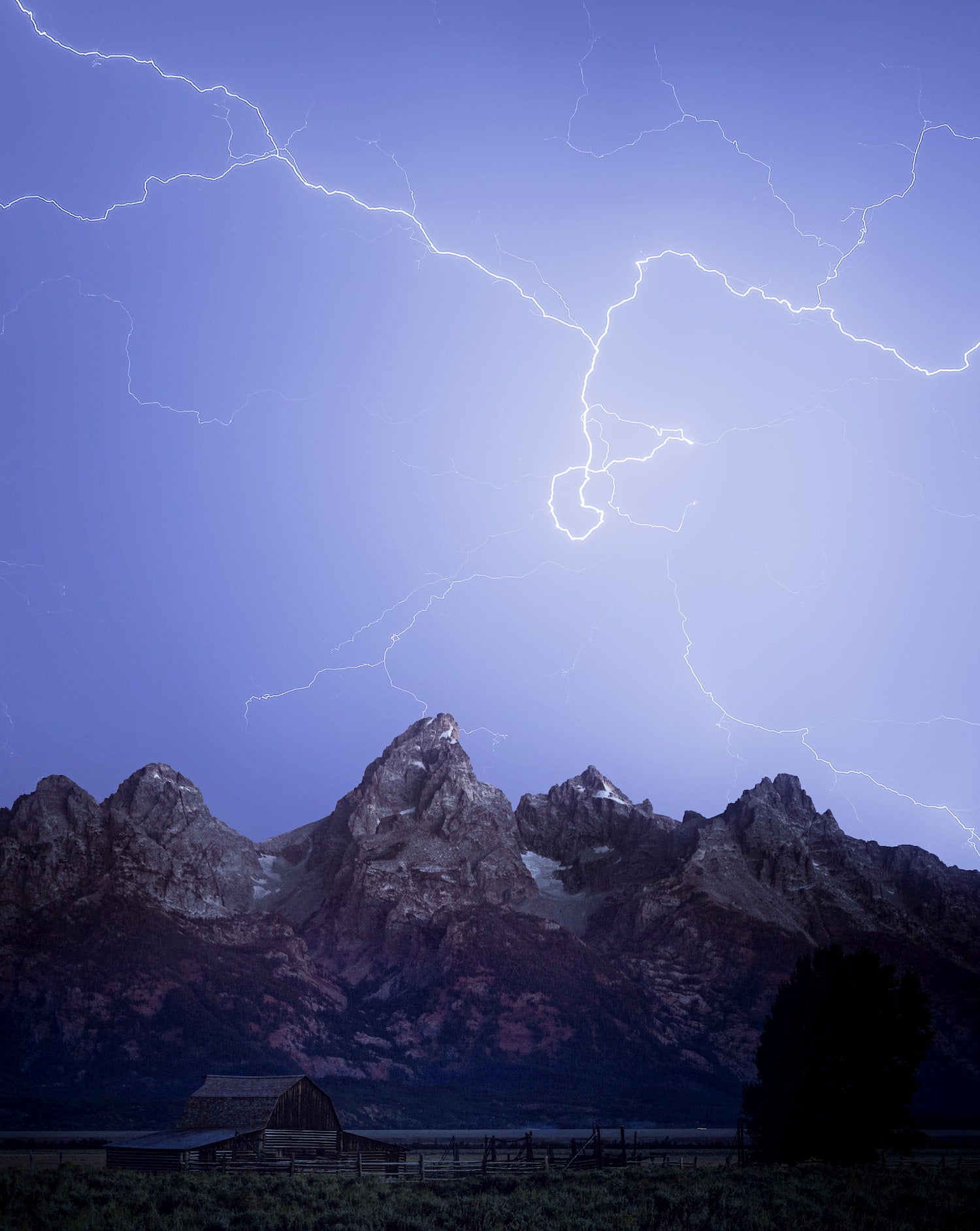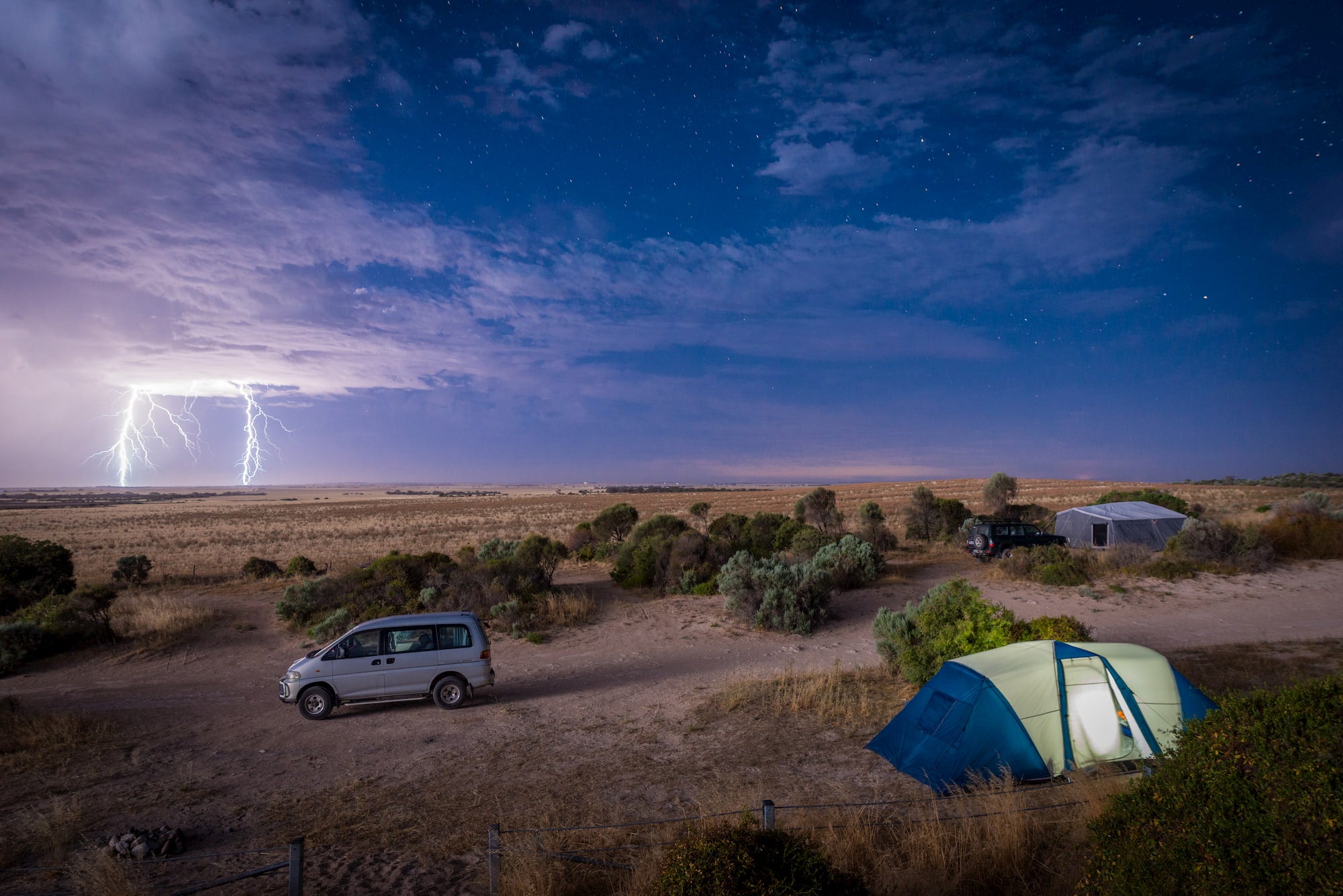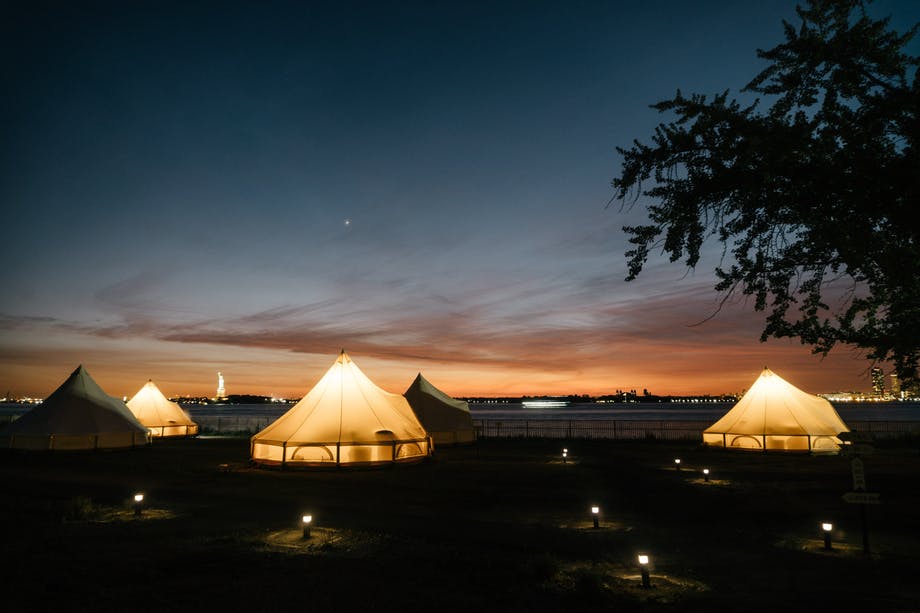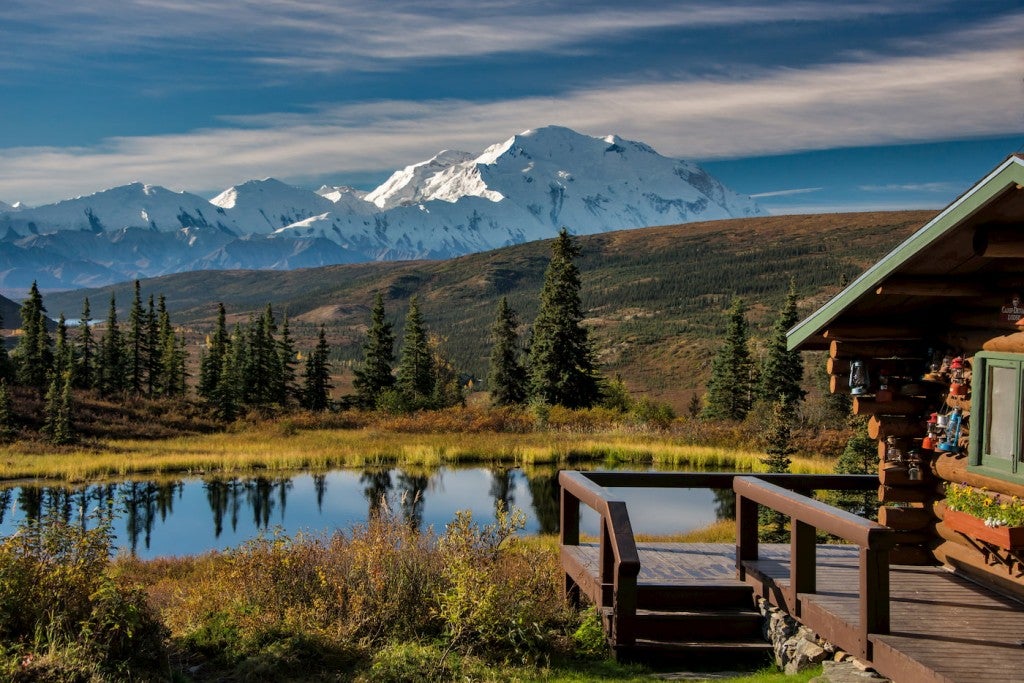Hikers in the backcountry know even a light drizzle comes with the threat of something dangerous. The potential for lightning is something that should always be taken seriously.
It’s best to avoid being outside during a lightning storm in the first place. Check the weather and consider changing your plans and heading back early if you see a storm approaching. But if you do find yourself stuck in a storm, reducing and managing risk is possible through sensible lightning safety procedures.
Your Guide to Lightning Safety in the Backcountry
Unfortunately, the field of backcountry lightning safety still lacks significant data collection, and even experts can only offer best practices based on an understanding of electrostatic fields and anecdotal experience. Here are the current best practices for lightning safety as per NOLS.
These tips are applicable in varied terrain, and can reduce your risk of injury significantly.
- Avoid standing near any object that is twice as high as its surroundings. This can mean a bush in the desert, a telephone pole, or a Douglas fir in an Aspen grove. 50 meters is a safe distance.
- Stay away from long conductors like metal fences, piping and even wet rope.
- Get rid of all metal objects, including backpack stays, crampons, fishing poles, or climbing equipment.
- Do not stand in water.
- Most importantly, plan your activities around avoiding exposure to storms. Research seasonal weather, and keep your eye on changing conditions the day before.
Understanding Lightning Position

Image from NPS.org
Similar to “Duck and Cover,” there is a codified position you put yourself in if you are in extreme risk during a lightning storm. While this position does not guarantee safety, if running to a shelter leaves you on exposed terrain during a storm, it is better to use the lightning position to reduce your risk of ground current injury or a direct strike.
Ground current occurs when voltage differs between two points of contact (your feet), drawing the current through your body, and causes roughly 50% of all lightning-related casualties. This is why the first part of lighting position is to bring your feet tightly together, preferably on top of an insulated pad or cloth bag (no metal). Next, crouch down over your feet and wrap your arms around your knees to avoid being twice the height of any surrounding objects. Do not sit down, as this causes two points of contact with the ground, varying voltage again.
If you are traveling in a group, separate yourselves by at least 50 meters, the distance of the average ‘leader’ charge. This way, even if one person is struck, the lightning will not jump to anyone else.
Remain in the lightning position until the storm has passed, and no thunder is heard.
Lightning Safety in Varied Terrain

Mountains
Tall mountain peaks, ridges and above-treeline terrain are high-risk areas for attracting a return current, or a lightning strike. In the summer months, especially in the semi-arid Rockies, regular afternoon thunderstorms create the perfect recipe for extremely dangerous lightning conditions. Most of these storms occur around 1 or 2 p.m., but it is not unusual for them to show up earlier. Because of these on-schedule storms, mountain guide companies and savvy hikers all set an ironclad turnaround time which puts them back below treeline before these regular storms appear.
If you hear thunder above treeline, turn around immediately and get back to the relative shelter of treeline, where the height of the trees is more uniform, and you are not the tallest thing around. Never hide in the entrance of a cave.
If you see sparks on metal objects, or your hair begins to rise, this is called a corona—it means that your body is putting up a leader towards an imminent strike. In this case, drop everything metal and assume the lightning position as quickly as possible.
For camping, backpackers should never pitch their tents above treeline if there is any alternative trip plan. If an exposed camp is unavoidable, then it is important to get out of the tent and move at least 50 meters away in the event of a storm, waiting in the lightning position until it has passed.
Rolling Hills & Gentle Terrain
Lightning strikes in this terrain are fairly random if the topography is smooth. Run for shelter if you hear thunder, but if the storm is striking nearby, get in the lightning position.
Fields
If you are out in an open field during a lightning storm, move more than 50 meters away from all long conductors like fences or irrigation piping. Make sure that you avoid twice as tall objects like trees or telephone poles by the same distance. Get in the lightning position and wait for the storm to pass.
Forests
Although lone trees are extremely dangerous, uniform canopy forests are much less at risk for attracting lightning. Stay away from the trunks of large trees, but it is better to be under that kind of shelter than out in the open.
Water
Boating on flat water such as lakes, wide rivers, or the ocean leaves one extremely exposed to lightning strikes. Plan aquatic activities around the weather forecast, and if you hear thunder in the distance, get to shore as quickly as possible. The CDC offers these suggestions for flat water boating.
The Dyrt is the only camping app with all of the public and private campgrounds, RV parks, and free camping locations in the United States. Download now for iOS and Android.Popular Articles:
Articles on The Dyrt Magazine may contain links to affiliate websites. The Dyrt receives an affiliate commission for any purchases made by using such links at no additional cost to you the consumer.



